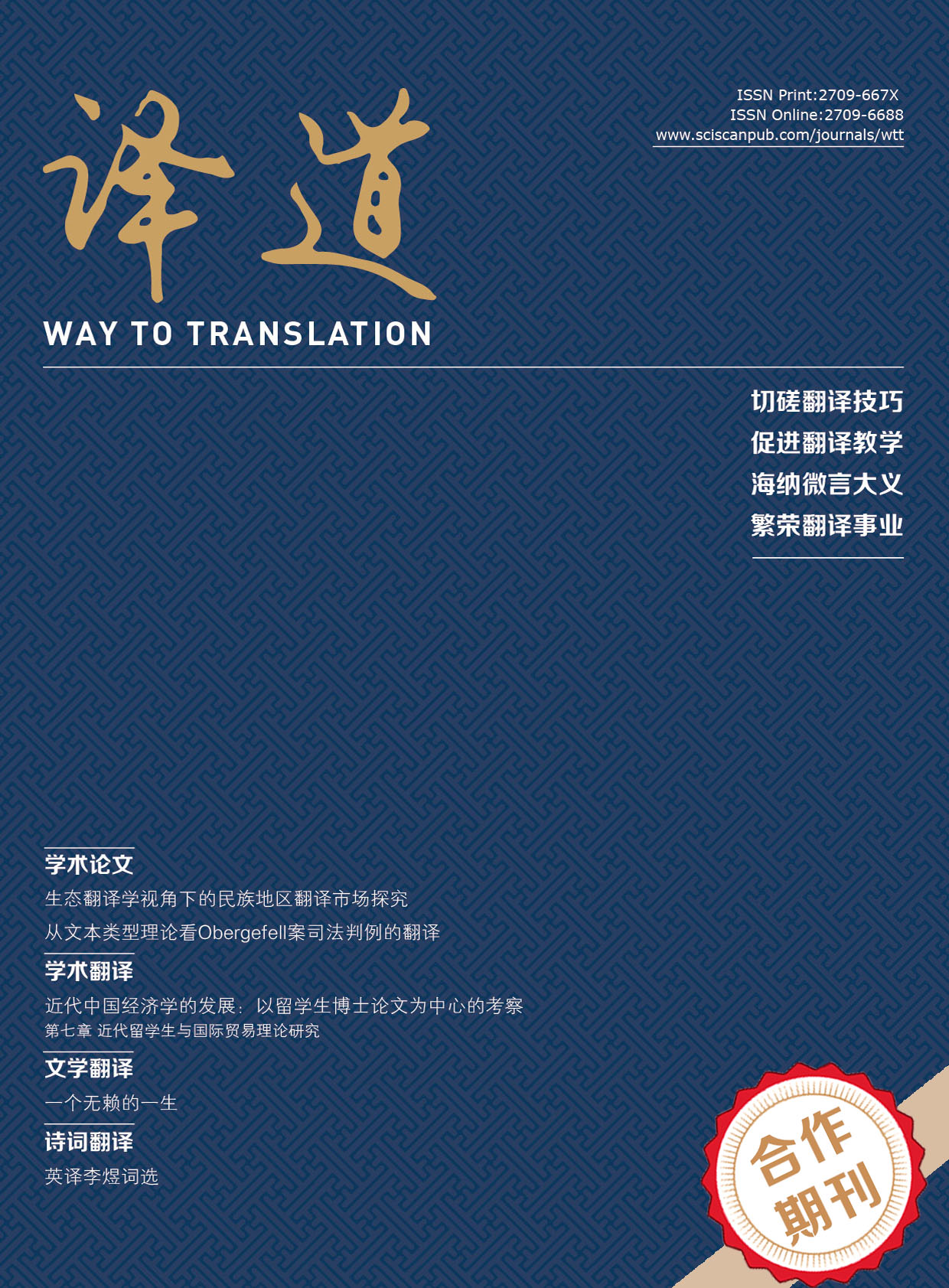Way to Translation
ISSN Print: 2709-667X
ISSN Online: 2709-6688
Contact Editorial Office
Subscribe to the latest published information from SCISCAN
“不 X 不 Y”构式的语义及其生成机制研究
A Study of the Semantics of “bu X bu Y” Construction and Its Generation Mechanism
- Authors: 张金曲
-
Information:
四川外国语大学英语学院,重庆
-
Keywords:
“bu X bu Y”; Construction; Semantics; Generation Mechanism“不X不Y”; 构式; 构式义; 语义生成机制
- Abstract: Based on the data from Centre for Chinese Linguistics PKU, this paper analyzes the “bu X bu Y” construction from two aspects: semantics and its generation mechanism. It is found that the semantics of “bu X bu Y” can be divided into six categories: negative emphasis, complete negation, compromise, derogatory emotion, conditional hypothesis and positive emphasis. The semantic generation mechanisms of this construction are mainly concerned with prominence view, metonymy, cognitive reference point theory and prototype theory. Through the prominence view, the “negative emphasis” category represents an emphasis of strong negation. By metonymy, a part of the constructions show complete negation. Through the reference point theory, the “compromise” category conveys a kind of compromise and rightness. According to the prototype theory, because of the existence of double redundant negation, the “positive emphasis” category has become a marginal member of its semantic category, which has gained additional emphasis compared to the typical member. 基于北京大学现代汉语语料,“不X不Y”的构式义可分为六类:否定强调、类义全否、层级折中、互 补贬义、条件假设和肯定强调。该构式的语义生成机制主要包括认知凸显、转喻、认知参照点和原型理论。通过认知凸显原则,“否定强调”类构式表示双倍否定强调;通过转喻操作,“类义全否”类表达 全部否定;通过认知参照过程,“层级折中”类表达折中或恰好;根据原型理论,“肯定强调”类依然 表达肯定。
- DOI: https://doi.org/10.35534/wtt.0202009 (registering DOI)
- Cite: -
















